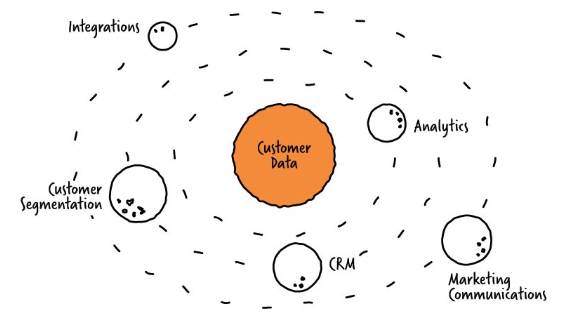Data gravity is weighing down your business
If your business relies on unwieldy spreadsheets full of historical data, you are wrestling with a data gravity problem. Everyone knows there’s probably a better way to do it, but nobody wants to put in the time or effort to move to a better system. But the longer you leave it, the harder it is to free yourself from the gravitational pull, as Mutiny’s Regan Kerr explains in this piece illustrated by Hugh Osbourne.
Recently, I was struck by a question from a client when working through an enterprise data strategy. As I explained how their data should flow through the martech stack from sources and platforms, they stopped me: “Yeah, but where are the centres of gravity?”
This was an interesting way of phrasing it, but it was a question that made a lot of sense the more I thought about it. Unsurprisingly, the idea of data ‘gravity’ already existed, and it becomes more relevant every year as the volume of data within businesses continues to grow.

Illustrator: Hugh Osbourne
‘Data gravity’ was first introduced as a metaphor on engineer Dave McRory’s blog, Data Gravitas. It describes the phenomenon where, as the volume of data grows within an organisation, platforms and systems become attracted, even enmeshed, in the data.

